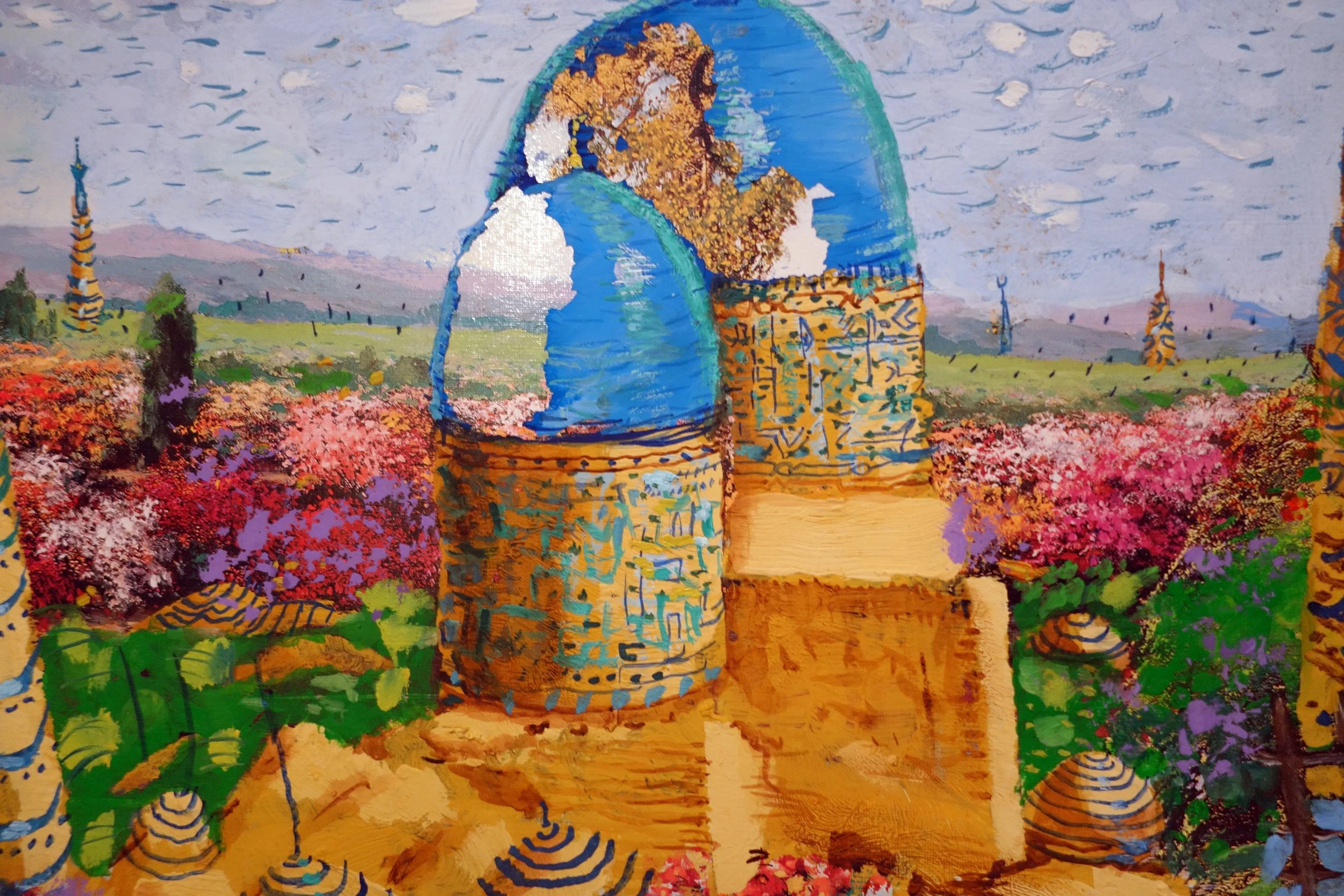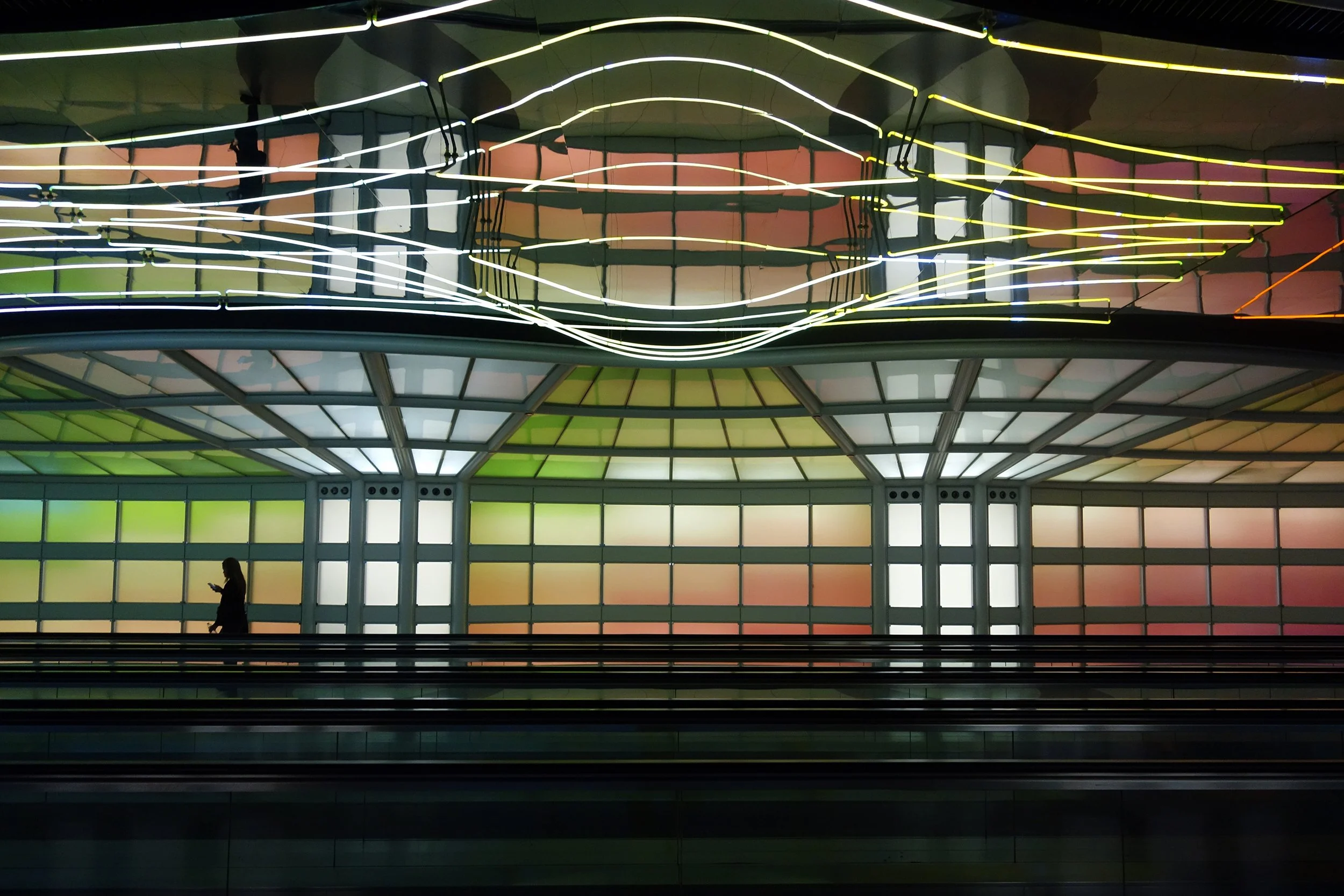
Page 11 of 11
Berlin, Germany
I'd been sailing so long I'd become the shore
The last destination on my Round the World trip was Berlin, one of my favorite cities and one that I don't get to nearly enough.
Starting us off is this view above the Lustgarten from the overlook at the Berliner Dom, the Protestant Cathedral of Berlin, right in (one) of the center(s) of the city. Like everything historic in Berlin, it is a reconstruction of a war damaged building. It is also across the street from one of the stranger (re)construction sites in Berlin. For reasons that might have been noble at the start but probably will end up badly, the city is rebuilding the Stadtschloss, a baroque palace that was broke(n) in the war and demolished by the East Germans decades ago. A strange move for a city that normally doesn't pretend that its past doesn't exist but also isn't usually all that anxious to revisit it.
My first visit to Berlin was during my first solo (or, to be more accurate, first) trip to Europe back in 1997. At that point it felt like the whole city was under construction, and one of the great things to visit there (for me at least) was the Info Box, a temporary building overlooking Potsdamer Platz filled with architectural models and drawings and renderings, along with a great view of the construction site. Here in the center of Berlin, across from the Lustgarden, there is a brand new Info Box, overlooking a rather interesting construction site. This was the home of the Palast der Republik, an East German modern building so indistinctive that I walked right by it in 1997 without really noticing it- I was surprised to see that I saw it when I looked back through my photos of that trip. Now it's gone and, in a rare example of architectural retribution, they are rebuilding the Berlin City Palace that was there first. I'm not sure how I feel about this to be honest, I mean it's not like Berlin has a Kaiser or King who is really looking for a new palace in a great location. Maybe it will be incredible, or maybe in another seventy years they'll tear it down and rebuilt the Palast der Republik back again.
During that first visit to Berlin, it was hard to imagine Potsdamer Platz ever really becoming anything interesting, despite all of those architectural models and drawings and renderings at the Info Box. Today, years and years (and years) later, not only can you visit Potsdamer Platz but you can also take to the sky to the Panoramapunkt observation deck, a towering 25 stories above the Strasse.
The hotel that I stayed at in Berlin was the same hotel that I stayed at the last time I was in Germany for the World Cup way back in 2006, and it is also the hotel that I will probably stay at the next time that I am in Berlin, whenever that might be. It is called the Arte Luise Kunsthotel and it has a few drawbacks but also some tremendous benefits. It's in an old building with no elevator and somewhat thin walls near the train tracks (that's the bad part) but it's also in a tremendous location in Mitte, a five minute walk from the Reichstag, Hauptbahnhof, Pariser Platz, Friedrichstrasse or the Tiergarten. It also is an art hotel where each room is decorated by a different artist, making each room and each visit a totally different experience. The room that I chose this time was #202, "Samarkand" by Shukhrat Babadjan, an Uzbeki artist who created a terrific immersive experience.
Berlin is crawling with history, and most of it isn't especially uplifting. In addition to the Peter Eisenman/Richard Serra Holocaust Memorial and the pretty rough Topography of Terror exhibit at the former Gestapo HQ site, there is also the German History Museum. The museum starts in the beginning and covers the Romans and Charlemagne and the Kaisers and Hitler and everything in between. It doesn't gloss over anything but it also sometimes takes a slightly more favorable view of World War 2 German society than you might otherwise be used to. It is also filled with amazing artifacts including this, a shot up Nazi globe that used to be Hitler's. His very own world to dominate as he dreamed of real world domination.
Originally built after a Prussian victory over the Danes, the Siegessaule (Victory Column) also used to be somewhere else. It originally sat in the plaza right in front of the Reichstag, until it was moved by Albert Speer as part of the larger Germania project, something which would have transformed the city in ways both totally unimaginable and (since it meant the Nazis would have been victorious) totally unthinkable.
This first picture is inside the basement level of the Jewish Museum in Berlin, the best building that Daniel Libeskind has ever designed. It has exhibits that cover the entirety of Jews in Germany and, as you could probably imagine, it's been a pretty rough ride for them so far. This level includes access to two memorials- one is a nice (enough) garden and the other is an amazingly powerful holocaust memorial. After you open a giant, heavy door, you find yourself enclosed but outside in a high ceilinged dark space. You can hear the outside world and breathe the outside air but you can not see anything other than a wedge of light above. Here you feel trapped and lost and alone and it's hard to stay inside for even a few moments before you just want out.
For the other, far larger Holocaust Memorial, you need to go across town near the Tiergarten. This is the one designed by Peter Eisenman and Richard Serra where you walk through the memorial you find yourself uncomfortable and trapped before you realize what is happening. At the edges it's almost playful, but walking in the middle, with blind corners and imminent collisions at every turn, as the city and reference points disappear from view, it certainly becomes fairly effective fairly quick.
The inherent design flaw of a Round the World trip is that in order to completely circumnavigate the earth you need to end up back where you started. So after three and a half weeks in Seattle, Beijing, Badaling, Shanghai, Melbourne, Singapore, Dubai, Jerusalem, Athens, Istanbul and Berlin, you can't do anything but go back to Newark and try and remember where you had just been. How time can move both fast and slow (still) amazes me.
And since everything that has a beginning has an end, this is the last picture of the slideshow, a view up from inside Norman Foster's Reichstag Dome as day became night. It was intentionally the last thing that I did on my last night in Berlin, in a building and in a city that I know and accept without question that I am sure to visit again.

